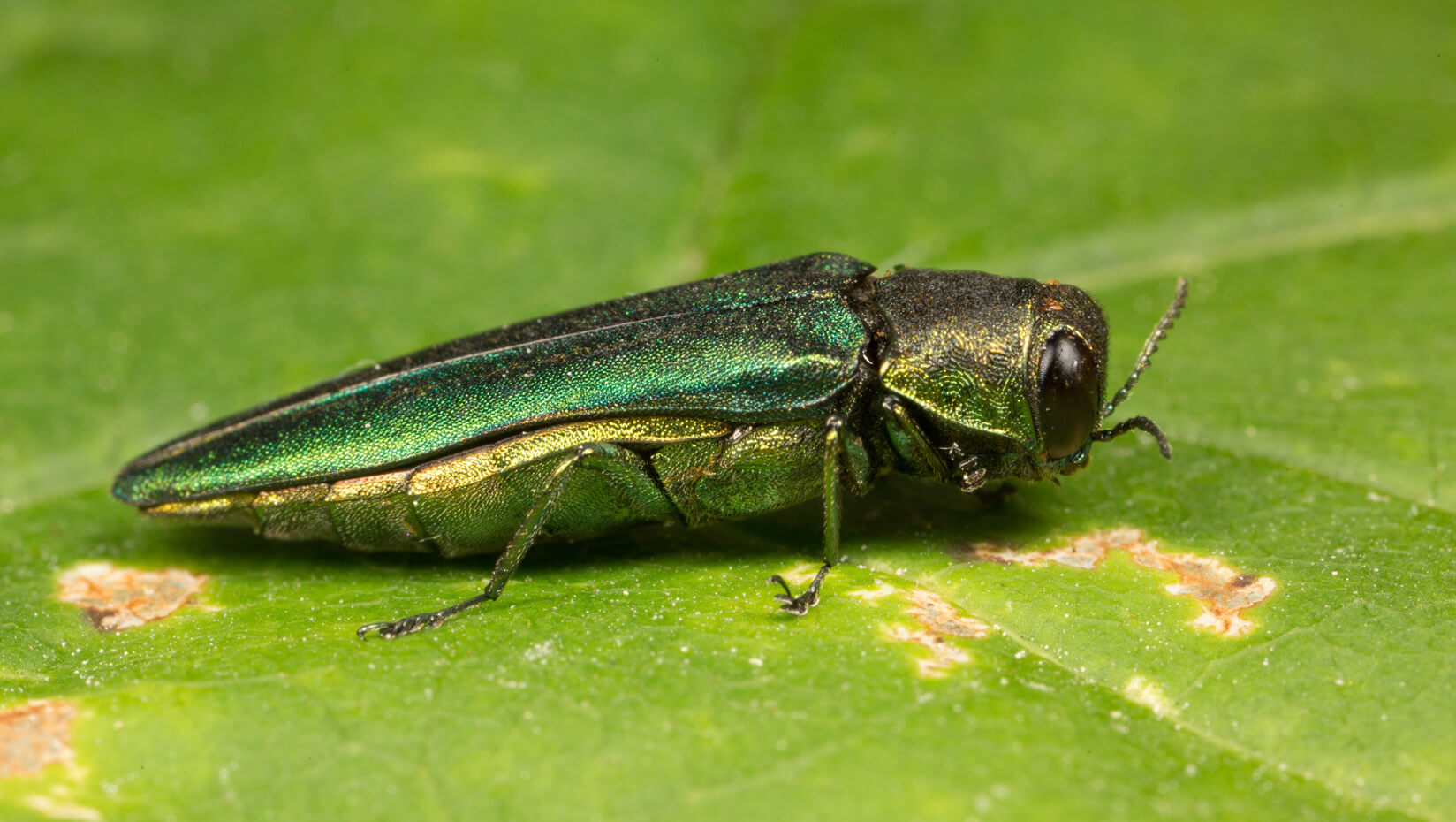
As ash borer barrels through North American forests, scientists and tribes team up to make a stand
“It’s a unique skill set that cannot necessarily be taught. Some people just have it,” Jacobs said.
Jacobs, a member of the Passamaquoddy Tribe, is one of few remaining basket-tree harvesters in Maine — a longstanding tradition that stretches back to before Europeans arrived on North American shores. Now, the custom faces a threat that may devastate the trees that harvesters like Jacobs seek.
Emerald ash borer, an insect native to Asia, has barreled through ash stands in at least 31 states and three Canadian provinces since it was first documented in Michigan and Ontario in 2002. Black ash, the species basket-tree harvesters target, is especially susceptible to the invasive insect that has already decimated millions of North American ash trees, and will soon arrive in Maine.
That spells trouble for Jacobs and many others, for whom ash trees are of critical cultural and economic significance. The black ash is a central element in several Native American and First Nation traditions, including some tribes’ creation stories.
Despite the importance of black ash to these cultural traditions and Maine’s rural economies, knowledge about the tree’s ecology is limited, and the information that was available was often conflicting.
Recognizing the information gap, William Livingston, associate director of UMaine’s School of Forest Resources, with collaborators Kara Costanza, a Ph.D. candidate in forest resources; John Daigle, professor of forest recreation management; Darren Ranco, associate professor of anthropology, chair of Native American Programs, and faculty fellow at the Senator George J. Mitchell Center for Sustainability Solutions; and Nate Siegert, a forest entomologist with the U.S. Forest Service, organized the Black Ash Symposium at UMaine in November 2014. There, basket-tree harvesters from Maine’s Wabanaki Tribal Nations (Aroostook Band of Micmacs, Houlton Band of Maliseet Indians, Passamaquoddy Tribe at Indian Township, Passamaquoddy Tribe at Pleasant Point, and Penobscot Nation) and the Saint Regis Mohawk Tribe from upstate New York shared traditional ecological knowledge with scientists who work throughout black ash’s native range in the U.S. and Canada.
“Butch Jacobs and other basket-tree harvesters use knowledge that is derived from generations of observations and usage,” Livingston said. “Combining this knowledge with scientific tools allow us to better predict how black ash will respond to current and future changes.”
They also took their study to the Maine woods, where the symposium group visited four black ash stands that were representative of two common stand types. The site visits not only benefited their exchange of knowledge by providing the context of a field setting, it also helped the team assess the borer’s potential impact on these types of stands and basket-quality ash trees.
“We learned from each other,” Jacobs said. “I have never once gone in the forest with Bill Livingston and not learned something from him, and he learned from me.”
Thanks to the assessments conducted at the symposium, Livingston, Costanza and their collaborators developed best practice recommendations for harvesting basket trees to increase the likelihood of maintaining them on a landscape invaded by emerald ash borer, and identified opportunities for future research.
“This work is really just scratching the surface of black ash biology and ecology. There is still so much more to study and comprehend, but this symposium allowed us to synthesize our knowledge to identify pressing research and collaborative needs for the future,” Costanza said.
This combination of traditional knowledge and the latest scientific tools at the symposium also helped identify ecological variables that helped find new locations that are likely to support basket-quality black ash trees.
“Even after the emerald ash borer becomes established in Maine, the black ash tree will not disappear. We will continue to use traditional knowledge, knowledge gained from other states, and scientific tools to help locate stands of black ash trees for continuing the tradition of basketmaking, and for recommending strategies to promote regeneration of the species on the best sites,” Livingston said.
The team recently published their findings in a special issue on tribal lands forestry in the Journal of Forestry. The project was supported by the U.S. Forest Service, Northeastern Area State and Private Forestry, Forest Health Protection, the National Science Foundation through grant EPS-0906155 to Maine EPSCoR and the Senator George J. Mitchell Center, and the Elmina B. Sewall Foundation.
Contact: Erin Miller, 207.581.3204
